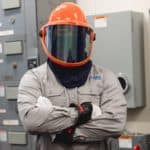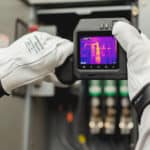Article Originally Featured in Electrical Safety in the Workplace
Author: Jay Smith, SEAM Group Director – Electrical Safety Services
NFPA 70E® training teaches you how the standard’s life-saving work practices help avoid electrical injuries, deaths, and OSHA violations. Training covers many topics, including establishing electrically safe work conditions, elements of a risk assessment, the difference between electrical hazards and risks, and the intent and limitations of personal protective equipment (PPE) required by 70E. Here are six key training considerations to address:
1. The changing workforce
A number of facility maintenance crews are bleeding knowledge—about facilities, hazards, electrical equipment—as the workforce ages with waves of retirements. This heightens the importance of NFPA 70E training for younger generations of workers who have not witnessed the evolution of electrical safety and arc flash safety in particular. Only in the past 15 years or so, since 2005-2006, when OSHA started citing companies for arc flash accidents, has arc flash knowledge and protections gained traction.
Older workers have seen an arc flash, been shocked, escaped near misses. They have decades of on-the-job knowledge, including identifying hazards and making hazard assessments.
Electrical safety training for newer workers should be led by instructors who can relate personal stories, accidents and close calls, case studies to bring 70E requirements to life. That dose of reality won’t come from viewing slide in a PowerPoint or a video. It helps to be trained by someone who have been there, done that, and likely scarred along the way.
2. Arc flash causes
A key point in 70E training is explaining how an arc flash occurs, and its causes. There are usually two main contributing factors. Either equipment has failed, or there is a physical interaction with an energized piece of equipment, such as removing a panel and working with a circuit breaker. Other causes include human error, failing to use insulated tools, excessive dust, corrosion, improperly maintained or installed switches and circuit breakers, use of substandard parts, and condensation near electrical equipment. Arc flash temperatures can reach as high as 35,000°F, hotter than the surface of the sun.





